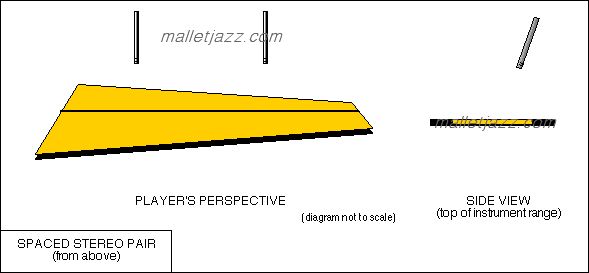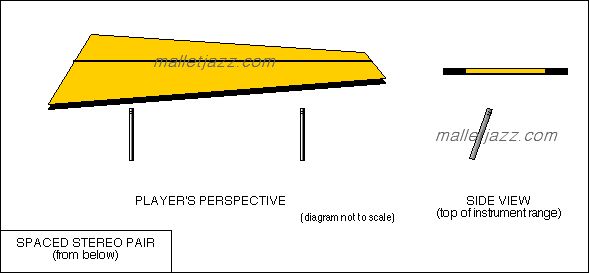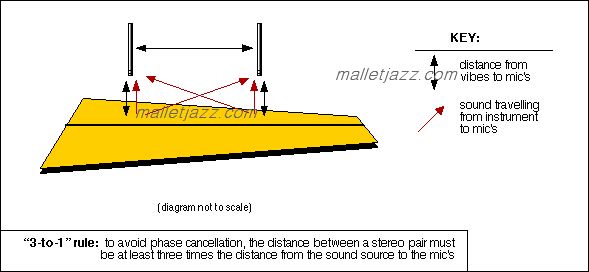


|
© 2000 James Walker
Excerpted from James' instructional CD-ROM, Signal Processing for Vibraphonists
|
Because of the size of the vibraphone, two microphones are usually used to amplify or record the instrument; a single microphone usually will not provide even coverage of the entire range of the vibes. Here are some commonly-used stereo microphone setups.
|
"X-Y CONFIGURATION"
(Note: also can be accomplished with a single, stereo microphone)

ADVANTAGES
|
DRAWBACKS
|
"SPACED STEREO PAIR (FROM ABOVE)"

ADVANTAGES
|
DRAWBACKS
|
"STEREO PAIR (FROM BELOW)"

ADVANTAGES
|
DRAWBACKS
|
THE "3-TO-1 RULE"

|
Phase Cancellation is a result of a sound reaching different microphones at slightly different times (or, "out of phase") - in other words, the same sound reaches two different microphones at a delay. If the difference is very slight, then the different sound waves can cancel each other out, making the amplified or recorded sound very "thin." This is especially the case when the two microphones' signals are combined into a single monophonic signal, such as plugging two mic's into an amplifier with only a single speaker.
The "3-to-1 Rule" ensures that such phase cancellation will not occur by guaranteeing that the effects of any phasing which does take place, will be minimized by the spacing of the microphones. By keeping the microphones three times as far from each other as they are from the sound source, the delay as the signal reaches the different microphones will be too great to cause a degredation of the sound.
(This page and all the materials within copyright ©2000 James Walker, All Rights Reserved. No portion of this page may be duplicated or distributed without the author's written consent.)
|
(click the "lessons" icon to return to the index of lessons at malletjazz.com)